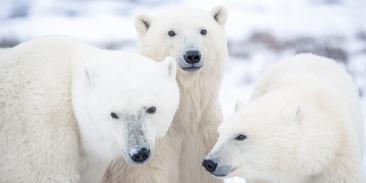EPA Asked To Limit Genetically Engineered Corn To Protect Butterflies
In a petition sent today to the Environmental Protection Agency (EPA), the Environmental Defense Fund (EDF) called on EPA to restrict the planting of Bt corn, a crop genetically engineered to kill insect pests. EDF also sent letters to chief executive officers of Monsanto, Novartis, and other companies selling Bt corn, asking them to restrict planting. EDF’s objective is to reduce the potential hazards of toxic Bt-corn pollen to the monarch butterfly and other species, including the endangered Karner Blue butterfly. A recent study published in Nature demonstrated that monarch butterfly caterpillars are killed by pollen from Bt corn in the laboratory.
“Toxic pollen is a prime example of genetic engineering gone awry,” said Rebecca Goldburg, an EDF senior scientist. “Bt corn was engineered to produce insect poisons, but these poisons do not discriminate between pests and treasured butterflies. Bt corn coats the leaves of wild plants growing near cornfields with toxic pollen, which butterflies then eat. Unfortunately, EPA has failed to consider the risks of toxic pollen from Bt corn to butterflies, including a number of rare and endangered species.”
To control insect pests, scientists have genetically engineered toxin genes from the soil bacterium Bacillus thuringiensis (Bt) into crops—causing these genetically engineered crops to produce insect poisons. EPA has registered seven different Bt pesticides for use in corn. EPA and USDA estimate that in the 1999 growing season, 20-25% of corn acreage in the United States, or approximately 16-20 million acres, has been planted to Bt corn varieties.
EDF asked EPA and the producers of Bt corn to require, through regulations or contracts with growers, that fields of Bt corn be surrounded by 40 to 60-foot wide borders of non-Bt corn. Because most corn pollen settles out within a few dozen feet of the corn plant, such borders would dramatically reduce the flow of toxic pollen from Bt corn into butterfly habitats. Such borders would constitute a small fraction of typical Midwestern corn fields, most of which are one-quarter to one-half mile on each side. “Planting a buffer zone of Bt-free corn is an effective and practical way of protecting monarchs, and other butterflies such as the Regal Fritillary and the endangered Karner Blue, from toxic Bt pollen while additional studies on this newly identified problem are completed,” said Goldburg.
EDF is also calling on the EPA to consult with the US Fish and Wildlife Service to determine whether any butterflies and moths listed as endangered or threatened under the Endangered Species Act are harmed by toxic Bt-corn pollen.
With more than 3 million members, Environmental Defense Fund creates transformational solutions to the most serious environmental problems. To do so, EDF links science, economics, law, and innovative private-sector partnerships to turn solutions into action. edf.org
Latest press releases
-
Trump Administration’s New Tax Credit Guidance Is “Another Senseless Attack on Clean Energy”
August 15, 2025 -
More Dire Colorado River Reservoir Forecasts Reinforce Urgent Need for Action
August 15, 2025 -
EDF, UCS Ask Court to Enjoin Trump Administration’s Brazenly Unlawful Use of Corrupt “Science” Report
August 15, 2025 -
Independent Report Finds that the Trump Administration’s Orders to Keep Coal-fired Power Plants Running Could Cost Consumers between $3-6 Billion a Year
August 14, 2025 -
EDF Strongly Opposes Trump Administration Proposals to Eliminate Protections for Air Pollution from Power Plants
August 13, 2025 -
Some Truck Makers Challenge Vital Clean Truck Partnership with California
August 12, 2025










